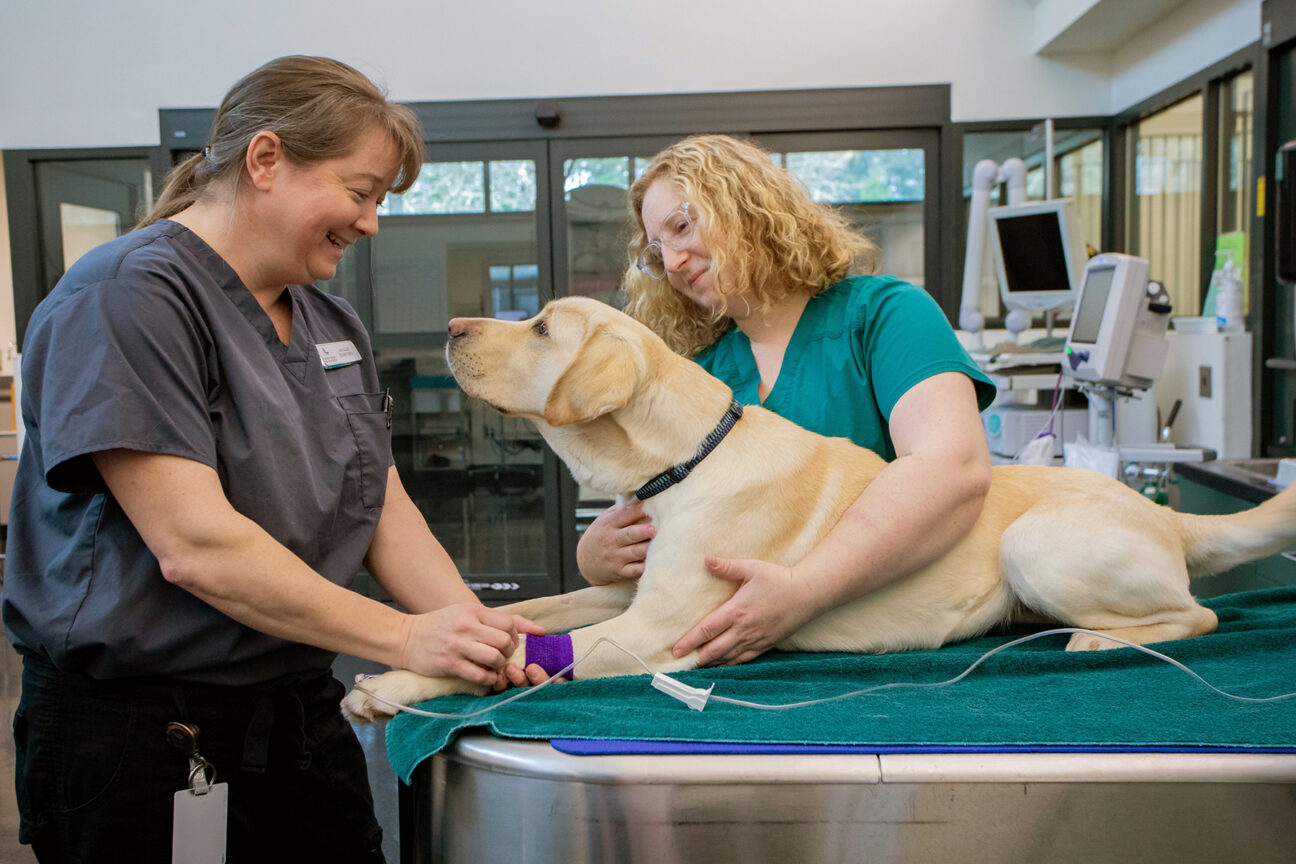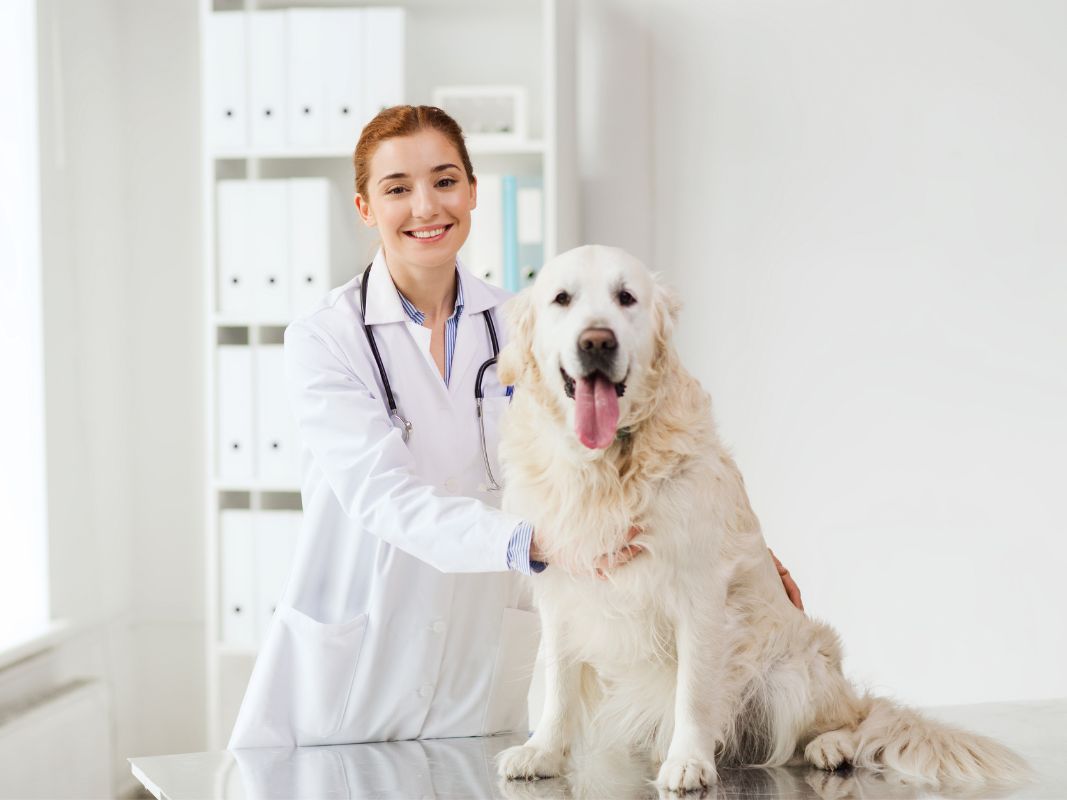Top Questions to Ask a veterinary cardiologist near me About Your Pet’s Heart Health
Top Questions to Ask a veterinary cardiologist near me About Your Pet’s Heart Health
Blog Article
All About Vet Surgical Treatment: Understanding the Importance of Professional Look After Your Animals
Vet surgical procedure is a critical part of pet healthcare. It incorporates numerous treatments, from regular elective surgical treatments to immediate interventions. Comprehending the details of these surgical procedures can assist animal proprietors make educated decisions. The prep work, execution, and healing stages are essential for guaranteeing the well-being of pets. With correct expertise, owners can browse the complexities of veterinary treatment. What factors should be considered before a family pet undergoes surgery?
Sorts Of Vet Surgeries
When an animal calls for medical intervention, understanding the numerous kinds of vet surgeries can help pet owners make notified choices. Veterinary surgeries can be generally classified into three main types: optional, immediate, and emergency situation surgical treatments. Elective surgical treatments, such as spaying or neutering, are intended treatments that are not instantly deadly. Immediate surgical procedures, like those for foreign body elimination, must be executed soon however are not serious in the moment. Emergency situation surgical procedures, such as those resolving serious trauma or inner blood loss, are vital and require prompt attention.Additionally, surgical procedures can differ in complexity, ranging from minimally intrusive laparoscopic procedures to extra considerable open surgical treatments. Each sort of surgical procedure lugs its own risks and recuperation procedures. Recognizing these categories permits pet proprietors to participate in significant conversations with vets, leading to better outcomes for their beloved animals.
Preparing for Your Animal's Surgical treatment
Getting ready for a pet dog's surgical procedure includes a complete checklist to assure all essentials are covered. Efficient communication with the vet is vital for comprehending the procedure and any necessary pre-operative steps - canine tplo surgery. In addition, having clear post-operative treatment directions will certainly assist proprietors offer the finest support for their recovering pets
Pre-Surgery List Fundamentals
Assuring a smooth medical experience for an animal needs mindful prep work and interest to information. A pre-surgery list is vital for family pet owners to adhere to. Initially, validating the arranged surgery date and time is important. Proprietors must also validate that their pet dog has not eaten according to the veterinarian's instructions, normally for 8-12 hours before surgical treatment. Gathering required medical records, including inoculation background, is necessary for the vet's review. It is additionally a good idea to prepare a comfy area in the house for the family pet's recovery after surgical treatment. Lastly, owners ought to have a strategy for transportation to and from the vet clinic, ensuring that the pet dog is secure and comfy throughout the trip. Complying with these steps can substantially enhance the medical experience.
Interacting With Your Vet

Reliable communication with the vet is essential for a successful surgical experience for pet dogs. Owners should be prepared to review their family pet's case history, including any kind of pre-existing conditions, drugs, and allergies. This details helps the vet evaluate dangers and tailor the medical strategy accordingly. Furthermore, animal owners should ask questions concerning the procedure, anesthesia, and anticipated end results to guarantee they fully recognize the process. Clarifying any uncertainties can ease anxiousness for both the pet and the owner. It is likewise essential to interact any type of behavior adjustments or concerns observed in the pet leading up to the surgical treatment. Eventually, clear dialogue fosters count on and collaboration, guaranteeing that animals receive the very best feasible treatment during their medical journey.
Post-Operative Treatment Directions
After reviewing the medical treatment with the veterinarian, family pet owners ought to focus on post-operative care guidelines to promote a smooth healing for their animals. These directions commonly consist of checking the surgical website for indications of infection, such as soreness or discharge. Animals may need to be kept tranquil and restricted to avoid excessive activity that might interfere with healing. Pain administration is essential, so proprietors ought to adhere to the veterinarian's guidance on carrying out medicines. Furthermore, nutritional limitations may be advised to prevent intestinal distress. Normal follow-up consultations are important to ensure correct recovery and resolve any issues. By adhering to these post-operative treatment instructions, pet dog owners can greatly add to their family pet's recovery and overall well-being.
The Surgery Explained
The medical process for pet dogs incorporates important actions that guarantee their security and recuperation. Pre-surgery prep work are crucial for minimizing threats, while post-operative care guidelines play an important duty in advertising healing. Comprehending these components assists pet dog proprietors navigate the surgical experience better.
Pre-Surgery Preparations
Before a pet dog goes through surgical procedure, several crucial preparations should occur to ensure a safe and successful treatment. A complete vet examination is necessary to examine the pet's total health and recognize any kind of prospective threats. This might consist of blood examinations, imaging, or other diagnostics. The veterinarian will additionally discuss anesthetic choices customized to the family pet's particular needs. In addition, pet dog owners are normally instructed to withhold food and water for a specified time prior to surgical procedure to decrease the danger of complications during anesthesia. It's vital for proprietors to give a full case history, including any medications or allergies, making sure the surgical group has all necessary information. Correct interaction and adherence to pre-surgery standards can considerably enhance the end result of the treatment.
Post-Operative Care Guidelines
Proper post-operative care is necessary for making certain an animal's healing adhering to surgical procedure. After the treatment, animals must be kept an eye on very closely for any type of indicators of issues, such as too much bleeding, swelling, or uncommon habits. It is essential to comply with the vet's guidelines concerning drugs, including painkiller and prescription antibiotics. Pets need to be kept in a quiet, comfortable atmosphere to minimize stress and anxiety and promote recovery. Restricting activity is vital; short, leashed strolls might be required, but jumping or running need to be prevented. Normal follow-up appointments must be set up to analyze the recovery process. Additionally, the surgical site needs to be maintained tidy and dry, with any indicators of infection reported to a veterinarian promptly. Adhering to these standards improves recovery end results.
Anesthesia and Discomfort Management
Reliable anesthesia and discomfort administration are vital components of veterinary surgical procedure, guaranteeing that animals remain comfortable and secure throughout the procedure. Vets assess each animal's individual demands, taking into consideration elements such as age, weight, health status, and the sort of surgical treatment being performed.Anesthesia procedures typically include a combination of pre-anesthetic medications, induction agents, and inhalant anesthetics, enabling exact control over the animal's degree of consciousness. Monitoring throughout surgical treatment is crucial; veterinarians continually observe essential signs to attend to any type of potential complications promptly.Pain administration approaches may entail opioids, non-steroidal anti-inflammatory medicines (NSAIDs), and neighborhood anesthetics, tailored to the pet's details circumstance. This diverse strategy helps minimize discomfort and advertises a smoother surgical experience. By prioritizing efficient anesthesia and discomfort management, veterinary professionals improve the general well-being of pet dogs undertaking surgical procedures, ensuring they get the highest requirement of care.
Post-Operative Treatment and Recuperation
Complying with surgical procedure, the focus changes to post-operative treatment and recovery, which is essential for guaranteeing a pet's secure go back to normal tasks. Throughout this period, animals call for a quiet, comfortable atmosphere to help recovery. Owners must closely monitor their pet dogs for any type of signs of pain or uncommon behavior.Veterinary guidelines usually include certain guidelines connected to medication administration, injury treatment, and nutritional adjustments. It is essential to stick to these suggestions to minimize issues and advertise healing. Animals may require to be limited from vigorous tasks, such as running or leaping, during their healing period (tplo surgery for dogs).Regular follow-up consultations with the vet permit monitoring of the pet dog's progress and timely modifications to the treatment strategy. Providing psychological support and friendship can also enhance a family pet's recovery experience, aiding to alleviate stress and anxiousness. On the whole, diligent post-operative care plays a considerable function in attaining an effective healing
Identifying Problems After Surgical Procedure
Just how can family pet owners determine problems after surgery? Awareness of certain indicators is important for ensuring the well-being of pet dogs during recuperation. Common indicators consist of extreme swelling, soreness, or discharge at the surgical website, which may symbolize infection. Additionally, relentless pain, shown by whimpering or reluctance to relocate, need to prompt instant attention. Adjustments in hunger or water consumption can also suggest issues; a decrease in these behaviors might indicate discomfort or distress.Moreover, pet dog proprietors should check their pet dogs for any type of uncommon actions, such as sleepiness or problem breathing, as these can be signs of severe issues. Throwing up or diarrhea adhering to surgical treatment might require immediate vet evaluation. Identifying these issues early can significantly affect a pet's healing procedure, highlighting the relevance of vigilance and prompt interaction with a vet for any type of concerning signs and symptoms.
The Role of Vet Specialists in Surgical Treatment
Veterinary professionals play a necessary role in making sure the safety and security and success of surgeries for pet dogs, especially complying with surgical procedure when checking and treatment are paramount. These professionals consist of vets, vet professionals, and assistance team, all of whom contribute specialized skills to the surgical process.Before surgical procedure, vets carry out comprehensive analyses to analyze the pet dog's health, making sure that any kind of underlying conditions are handled. Throughout the treatment, the medical group provides anesthesia, preserves sterilized atmospheres, and monitors essential indications, very important for reducing risks.Post-operative treatment is just as substantial; veterinary experts observe for complications, manage discomfort, and guide proprietors on recovery techniques. Their proficiency allows them to acknowledge early signs of distress or infection, ensuring timely intervention. Inevitably, the collective initiatives of vet experts in medical care cultivate a secure atmosphere, promoting the well-being of family pets throughout the medical journey.

Regularly Asked Concerns
Exactly how Do I Choose the Right Vet Cosmetic Surgeon for My Pet?
Picking the ideal veterinary doctor includes researching credentials, checking out reviews, and reviewing the facility's environment. It is vital to show on the surgeon's experience with certain procedures and their interaction design when making a choice.
What Are Typical Misconceptions About Vet Surgeries?
Common misconceptions about vet surgeries consist of ideas that they are always dangerous, unnecessary, or for emergency situations. Lots of family pet owners ignore the advantages of preventive treatments and the ability associated with vet surgical care.
Just How Much Will My Family pet's Surgical procedure Price?
The price of a family pet's surgical procedure can differ considerably based upon aspects such as the sort of treatment, the veterinarian's experience, and geographic location (veterinary cardiologist near me). Usually, expenses vary from a couple of hundred to a number of thousand dollars

Can My Pet Dog Eat Prior To Surgical Procedure?
Prior to surgical procedure, it is normally advised that pet dogs avoid from consuming for website a specific period. This fasting helps in reducing the threat of issues during anesthetic. Owners need to consult their vet for precise directions tailored to their animal's requirements.
Suppose My Pet Dog Has Pre-Existing Health Conditions?
When a pet has pre-existing wellness conditions, it's vital for the vet to analyze these variables prior to surgery. This examination assurances ideal safety measures are taken, decreasing risks and maximizing the pet dog's general safety throughout the procedure.
Report this page